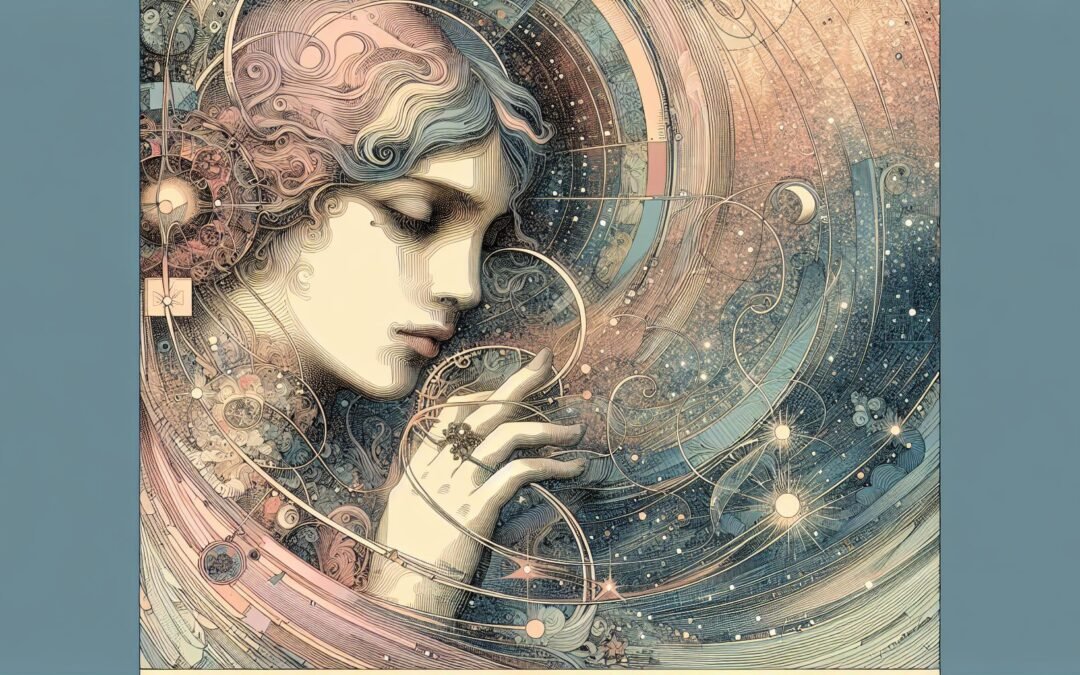Love poems for her reflect shifting notions of intimacy, desire, and voice from ancient lyric to digital forms. Sappho’s fragments voice longing in language resonant with private yearning, while Catullus and Ovid infuse the beloved’s presence with irony, ambiguity, and ritualized speech. In classical poetry, the beloved is rarely static. Admiration and vulnerability interlace, as shown by Sappho’s “He seems to me equal to gods that man.” This tradition shapes the grammar of devotion, but global literary history far exceeds Greco-Roman boundaries. For example, Persian ghazals by Hafez and Chinese ci poetry by Li Qingzhao map longing and agency within different social frameworks, broadening the contexts in which poets negotiate the distance between longing and fulfillment. Exploring the types of love poetry reveals architectures of address, yearning, and transformation that persist across eras.
Historical Evolution of Love Poems for Her
Examining the historical progression of love poems for her illuminates how cultures, gender dynamics, and literary forms shape expression. Voices, both hidden and declared, have composed poems about women, for women, and by women, enacting power and vulnerability in divergent forms. Transmission across languages and epochs not only transforms content but also challenges who speaks and who is addressed, an evolution visible from Sappho through contemporary poets.
Ancient Worlds and Gendered Address
Sappho, composing her lyrics on Lesbos during the sixth century BCE, centers female desire through concise, sensuous imagery. Her poetic voice brings private emotion into shared space, transforming longing for women into an articulate art of presence. Phrases like “He seems to me equal to gods…” introduce intensity that bridges solitary interiors and communal ritual. Roman poets Catullus and Ovid adapt this inheritance in their poetry, but most often from male speakers to female beloveds. Catullus’ Lesbia remains an elusive figure, her agency filtered through performance and wit. In Ovid’s Amores, tenderness mingles with role-play and comic reversal rather than consistent vulnerability. The gendered address of poem to beloved frequently assumes a male voice and a woman as object, though the meaning and context become more complicated when transferred into later forms or read in translation.
Poetic Exchange Across Civilizations
Foundational Arabic poetry, especially qasidas and ghazals, reimagines longing through repetition, ambiguity, and the beloved’s frequently ungraspable persona. Persian poets like Hafez craft ghazals in which the beloved may be woman, youth, or divine presence, the ambiguity in gender and status complicating interpretation. Li Qingzhao’s Chinese ci expresses grief, remembered desire, and loneliness, establishing a female voice of longing and self-assertion whose echoes persist in Asian and world poetry. Transmission and translation recalibrate meaning: medieval Andalusian poets create Hebrew and Arabic lyrics informed by these traditions. Poetic address thus evolves through contact, appropriating and refashioning motifs that cross continents, languages, and gendered assumptions.
Medieval Courtly Love and Troubadour Innovation
Occitan troubadours in twelfth-century Europe encode yearning for a lady within ritual constraints, yet not all composers are men. Trobairitz (female troubadours) write from their perspective, shifting agency from muse or judge to active respondent. Courtly love conventions enforce hierarchy, but composition by women complicates these models, revealing negotiation rather than passive admiration. With Bernart de Ventadorn’s “Can vei la lauzeta mover,” the speaker’s longing entangles admiration, beauty, and self-doubt. Dante in Vita Nuova presents Beatrice not simply as chivalric object but as spiritual mediator transforming earthly love into transcendent aspiration. Petrarch’s sonnets to Laura, obsessed with unattainability, reinforce the idealized beloved, but narrative voice reveals tension between submission and the search for self-understanding. These threads interlace through allegory and lyric craft. See the best love poetry books for annotated collections on these traditions.
Renaissance and Early Modern Shifts
The Renaissance ushers in formal experimentation and new approaches to romance. Petrarchan structures wielded by Sidney or Spenser inspire rhetorical innovation, while poems dispute or satirize inherited ideals. Sidney’s Astrophil laments and yearns for Stella, entwining wit with frustration. In Shakespeare’s sonnets, particularly those addressed to the “Dark Lady,” beauty is destabilized, and language turns playful, sometimes subversive. His sequence encompasses desire for both women and men, challenging easy categorization. Many sonneteers experiment with persona; their poems blur distinctions between real and imagined beloveds or shift gendered pronouns to explore shifting desires and social taboos. Contextual study of the rhyming poetry about love in England, Spain, and beyond reveals ongoing negotiation of feminine address and authorial intent.
Romanticism to Victorian Renewal
Romantic poets embrace heightened emotion, subjectivity, and nature. Keats’s odes present the beloved as inspiration and existence, fusing sensuous presence and eternal longing. Gendered address persists, yet poets modulate language to shape intimacy or elevate ephemeral moments. The Victorian age intertwines emotional exposure and propriety. Elizabeth Barrett Browning’s “Sonnets from the Portuguese” reframe vulnerability by narrating love’s inward, transformative journey: “How do I love thee? Let me count the ways” opens space for agency and confession. These undertones challenge prior restrictions without discarding them. Robert Browning’s monologues, though addressed to women, multiply viewpoints and unsettle fixed identities. Explore alternative dynamics in poems about sisters love, tracing love and kinship.
Modern, Contemporary, and Non-Western Dialogues
The twentieth and twenty-first centuries bring fragmentation, hybridity, and new political urgencies into love poems for her. Pablo Neruda’s “Sonnet XI” entwines erotic hunger, landscape, and resistance, mingling corporeal and political love. Poets, among them Adrienne Rich and Warsan Shire, pursue reclamation of queer, female, and postcolonial agency, allowing the beloved to speak, reject, and reshape desire. Digital platforms reshape the poem’s form and audience; love poetry emerges as meme, tweet, or DMs, traversing boundaries between public performance and personal conversation. Hybrid texts use code-switching, intertextuality, and visuality to echo migration and trauma, as well as joy and experimentation. New forms unsettle the passive beloved: see goodnight poems for her for meditations on presence, absence, and daily affection.
Translation and Cultural Transformation
Translation constantly remakes love poems for her. Sappho survives in fragments, known through papyri and interpretation, her voice reframed by translators’ choices. Ghazals and ci, when rendered in English or Spanish, shape who is heard, and who becomes beloved. The transmission of tropes—eye as star, longing as fever, night as companion—depends on language, culture, and audience. Hybridity emerges when traditions mingle: Urdu ghazals gain new resonance through American spoken word, and Persian motifs surface in Caribbean lyrics. These exchanges intensify complexity, multiplying meanings for the beloved, the speaker, and the listener. The cosmic love of love poetry invites exploration through global lenses, shifting who possesses voice, gaze, and power.
Enduring Themes and Motifs
Motifs within love poems for her evolve to reflect changing ideals and lived realities. Some poems exalt the beloved, others question the ethics or viability of adoration. The intersection of longing, speech, and selfhood remains critical, but themes are never monolithic. Traditions embedded in one culture travel, fragment, and recombine, producing address that is by, about, or to women in nuanced arrangements. Surveying love poem for my wife illuminates devotion, partnership, and self-disclosure.
Idealization and Adoration
Idealization frames the beloved as symbol or axis of perfection. Sappho’s invocation of Aphrodite imbues the beloved with mythic resonance—goddess and lover merge in poetic imagination. Petrarch transforms Laura into a figure of spiritual longing; catalogues of beauty and virtues proliferate. Yet adulation risks flattening or imprisoning the beloved into abstraction, a motif toggled back and forth by Shakespeare’s “My mistress’ eyes are nothing like the sun.” Poems oscillate between tribute and critique, as idealization amplifies tension and desire.
Longing, Absence, and Awaited Union
Longing propels the structure and music of love poems for her across centuries. The ache of distance becomes source of poetic invention: troubadours render yearning into sustained melodies, while Petrarch’s unattainable Laura embodies the sweetness of lack. Chinese, Persian, and Urdu lyric poetry construct entire architectures of delay, separation, and hope. In the twentieth century, loss acquires new registers: absence becomes trauma, migration, political exile, or digital separation. See poems to make her fall in love for examples where hope and desire war with silence and inaccessibility.
Bodies, Beauty, and Spirituality
Descriptions of the beloved’s face, hair, and gaze saturate sonnet and ghazal alike. Poets convert material features into roses, flames, constellations, bridging physical desire and imaginative transcendence. John Donne’s metaphysical conceits fuse body and soul within a single metaphor. T. S. Eliot and E. E. Cummings fracture traditional structure, infusing love poems for her with ambiguity, fragmentation, and layered embodiment. Poised between directness and obfuscation, the genre renews questions of how words animate or distort the beloved’s presence.
Devotion, Fidelity, and Partnership
Fidelity finds voice across cultures in oaths, vows, and remembered love. Elizabeth Barrett Browning transforms private vows into enduring poetic monuments, while Urdu and Persian poetry interrogate loyalty’s bounds amid emotional risk. Contemporary poems celebrate queer, polyamorous, or non-normative arrangements—devotion need not replicate the past. Poems may commemorate anniversaries, forgive betrayals, or map persistent hope. For reflection on faith and trust, explore infidelity in poetry as counterpoint.
Empowerment and Reclaiming Voice
Classical and medieval poems usually silence the beloved; her story is mediated by speaker and audience. Some rare exceptions—Sappho’s fragments or Arabic mu‘allaqat—register her voice, grief, or agency. Feminist and postcolonial poets renew her authority, as in Carol Ann Duffy’s “Rapture,” where the beloved exerts sovereignty, or Warsan Shire’s poetry, which navigates migration, trauma, and power. Empowerment emerges when the beloved commands, rejects, or redefines longing. Historical cycles rarely move in a straight line: resistance alternates with re-inscription, and poetry chronicles both struggle and triumph. For more on these evolutions, visit lesbian love poems to read about voices that reshape the tradition.
Imagery, Symbol, and Sensual Evocation
Language in love poems for her distills emotion through sensory richness: shimmering eyes, trembling leaves, celestial or terrestrial landscapes. Poets construct metaphors and similes that both reveal and cloak desire. Roses lose singular innocence, becoming sites for irony, decay, or renewal. In good morning poems for her, dawn stands for hope and new beginnings, while night poems invoke dream and distance. The interplay between literal and symbolic language invites layered reading, ranging from blazons to subversion of the gaze.
Form, Voice, and Experimentation
The evolution of love poems for her arises from shifts in language, literary form, and the agency of both speaker and beloved. Some traditions rely on set forms like sonnet, ghazal, or haiku, while others pursue free verse, prose poetry, or hybrid structures. New technologies, oral performances, and digital platforms disrupt boundaries between performer and reader, between address and reception. The how to write love poetry resource uncovers tools for crafting these modern explorations.
Metaphor, Polyphony, Hybridity
Extended metaphor sustains emotional layering, from constellation and garden to fortress and forest. Polyphony emerges in composite poems, where multiple voices interrupt and reshape the text. Hybridities—mixing languages, inserting visual elements, echoing song or meme—invite diverse audiences into the poetic moment. Fragmentation in the contemporary period reflects not only postmodern uncertainty but also experiences of migration, border crossing, and ephemeral digital affinity.
Public, Private, and Digital Space
Where older poems appear confined to manuscript, letter, or oral recitation, new forms appear on screens, in chats, and through multimedia. Privacy and confession mingle with performative self-invention. Individual lines are remixed or anonymized, shared across social media. The poem’s meaning shifts as it appears as text message, Instagram caption, or collaborative playlist. Desire, confession, and secrecy are reimagined within communal dialogue and fleeting digital permanence. See romantic poems to make her feel special for forms tailored

